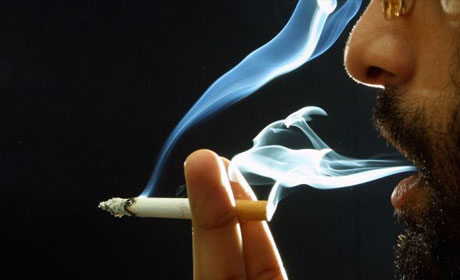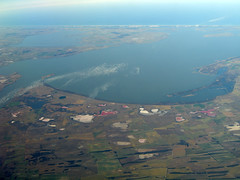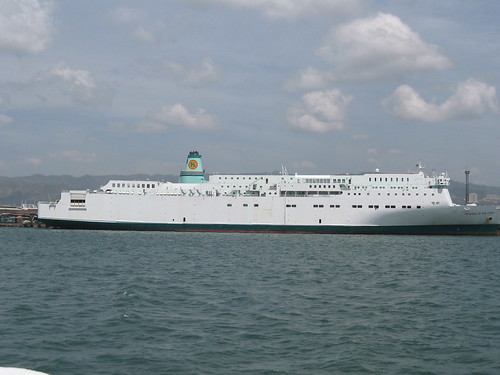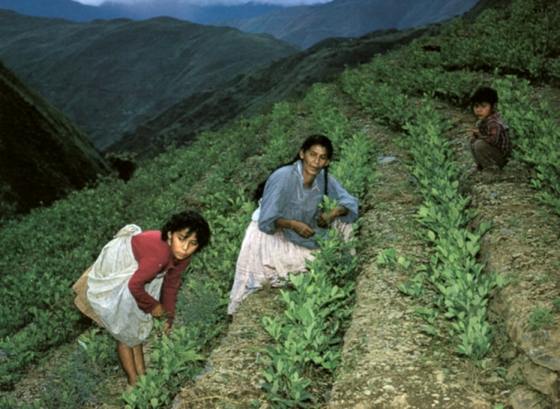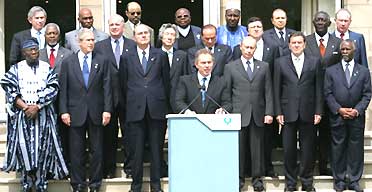 Scientists have gathered today in Siberia to commemorate the hundredth anniversary of the Tunguska Event. One hundred years ago today, a fireball streaking across the sky caused a massive explosion in the Siberian hinterlands which marks the largest recorded collision between Earth and an object from space. Although largely unnoticed at the time, the explosion measured five on the Richter scale and destroyed a 2,500km area of taiga forest. But because of the area’s isolation hardly anyone died and it would take 21 years for a scientific expedition to reach the scene of the devastation.
Scientists have gathered today in Siberia to commemorate the hundredth anniversary of the Tunguska Event. One hundred years ago today, a fireball streaking across the sky caused a massive explosion in the Siberian hinterlands which marks the largest recorded collision between Earth and an object from space. Although largely unnoticed at the time, the explosion measured five on the Richter scale and destroyed a 2,500km area of taiga forest. But because of the area’s isolation hardly anyone died and it would take 21 years for a scientific expedition to reach the scene of the devastation. Tunguska was the largest cosmic impact event on Earth in recent history. At 7:17am local time on 30 June 1908 a shock wave flattened 80 million trees in Siberia near the Podkamennaya Tunguska River in what is now the Krasnoyarsk Krai region in central-Eastern Russia. Because of its remoteness no-one is entirely sure what happened. The most likely reason for the explosion is a meteorite which exploded at an energy force of somewhere between 10 and 15 megatons, about a thousand times more powerful than the atomic bomb that destroyed Hiroshima.
The shock waves of the Tungunska explosion were monumental. They circled the globe twice and were registered by all observatories. In Irkutsk, 1,500kms away, a seismograph scale went wild. The ground trembled as far as Tashkent in Uzbekistan (Central Asia), Tbilisi in Georgia (South Caucasus) and even Jena, Germany. Barometers in the UK registered atmospheric pressure fluctuations. The blast caused a four-hour magnetic storm which closely resembled the geomagnetic fluctuations registered after high-altitude nuclear blasts. Over the next few days “white nights” and unusual silvery clouds were seen over the vast territory from Siberia to Europe’s western borders.
The Tunguska event is one of the most mysterious and well-studied 20th century phenomena. Evidence is elusive and only a few traces of its existence were found. The most likely explanation is an exploding fragment from a disintegrating meteorite but scientists concluded there was no actual impact. The meteorite was probably travelling at around 34,000 kms per hour when it exploded about 8km above the Earth's surface. According to local accounts a bluish fireball appeared in the sky which was followed by a flash ten minutes later. Then there was a deafening explosion that was heard 500 km away. The ground began shaking as in an earthquake, and a hot wind blew across the land, singeing crops and shattering windows.
Closer to the explosion, the object was seen in the cloudless, daytime sky as a brilliant, sun-like fireball. At distances around 60 km, people were thrown to the ground or even knocked unconscious; windows were broken and crockery knocked off shelves. The closest observers were reindeer herders asleep in their tents in camps about 30 km from the epicentre. They were blown into the air and knocked unconscious; one man was blown into a tree and later died. According to one survivor "Everything around was shrouded in smoke and fog from the burning fallen trees."
 Scientists now suspect a stony asteroid exploded in mid-air because of high-pressure air resistance. From the explosion a boulder flew out at a slightly skewed angle which blasted out a crater. Later it filled in with water and sediments that disguise its shape today. New seismic studies show a candidate rock is buried under the lake. This summer Italian scientists will return to the scene at Lake Cheko to check out if this is the asteroid that flattened the forest.
Scientists now suspect a stony asteroid exploded in mid-air because of high-pressure air resistance. From the explosion a boulder flew out at a slightly skewed angle which blasted out a crater. Later it filled in with water and sediments that disguise its shape today. New seismic studies show a candidate rock is buried under the lake. This summer Italian scientists will return to the scene at Lake Cheko to check out if this is the asteroid that flattened the forest. But others are less certain and remain convinced the mystery will survive another hundred years. Wilder theories include an alien spacecraft which blew up, or that a black hole made a freak appearance. The problem is caused by the fact that no evidence was obtained at the time of the blast. Because of the chaotic conditions in Russia at the time, the first scientific expedition to the scene of the explosion did not arrive until Soviet times in 1927. Professor Leonid Kulik led an expedition there but was unable to establish the cause of the conflagration two decades after the fact.
To this date, no-one has found a crater which might identify the ‘ground zero’ for the explosion. But the fallen trees acted as markers pointing away from the epicentre. Kulik’s team estimated the asteroid entered Earth's atmosphere travelling at a speed of about 54,000 km per hour. During its quick plunge, the 100-million-kilo space rock heated the air surrounding it to over 20,000 degrees Celsius releasing the energy of 200 atomic bombs. On average, a Tunguska-sized asteroid will enter Earth's atmosphere once every 300 years, so if statistics are right, we have 200 years to prepare for the next holocaust from space. Equally intriguingly, had the explosion had occurred some five hours later, it would have completely destroyed the then Russian capital of St. Petersburg. How would the 20th century have turned out if the Tsar had died then at the hands of nature instead of a decade later at the hands of the Bolsheviks?






